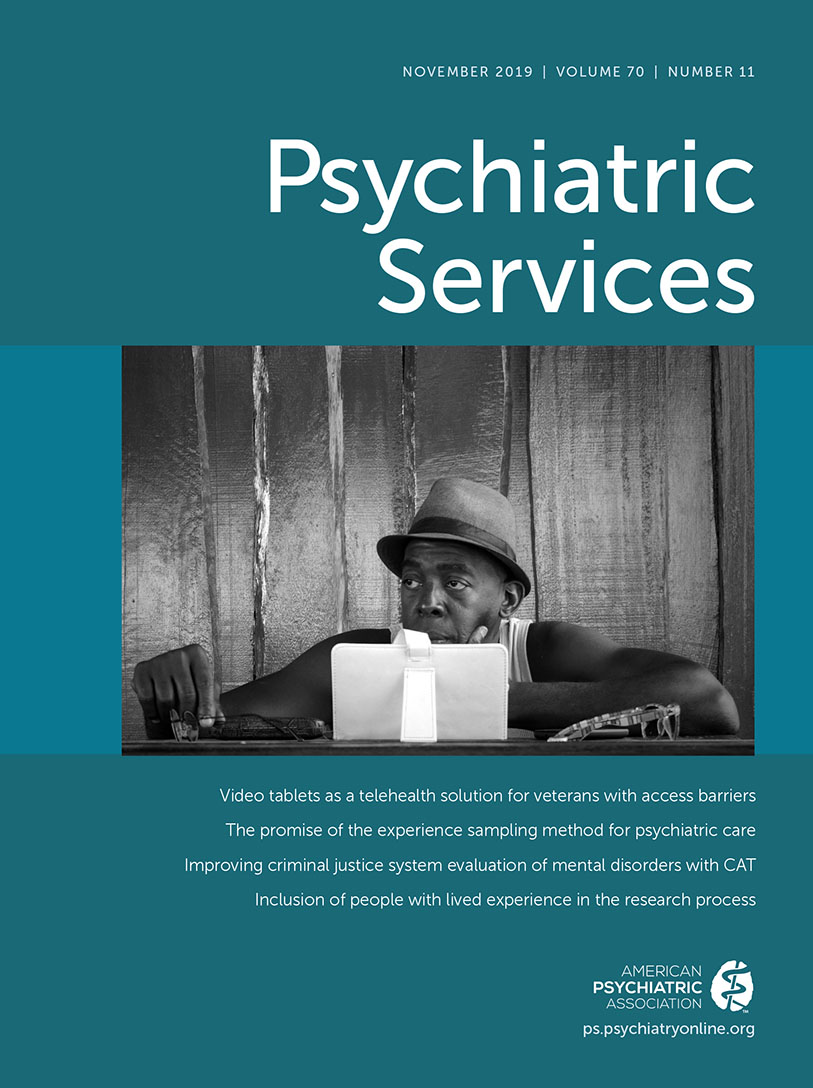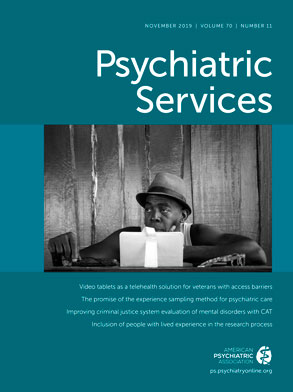TO THE EDITOR: Suicide is a public health concern worldwide. According to the World Health Organization, suicide rates have increased by 60% in the past 45 years, and about 800,000 people die by suicide every year, or one every 40 seconds (
1).
Several studies suggest that people with mental disorders, often characterized by chronicity and high rates of relapse, have a higher lifetime risk of suicide attempts than the general population (
2). In this context, early readmission (variously defined as a new hospitalization for the same problem 30 days to 1 year after discharge) and an increased suicide risk after hospital discharge represent serious concerns for health care (
3).
Depression, hopelessness, comorbid illnesses, and previous suicidal behavior are key indicators of suicide risk (
4). However, suicide remains a complex phenomenon, and prediction is highly difficult in most cases. Therefore, a multidimensional risk assessment of suicidal thoughts, feelings, and behaviors to identify individuals at high risk of suicide is recommended. The Nurses’ Global Assessment of Suicide Risk (NGASR) scale has recently received attention because of its potential utility to nurses in assessing suicidal tendency.
The NGASR has several advantages: it has been tested in different clinical settings, it includes 15 items with dichotomous responses and thus has been found to be quick and easy to administer, without need for preliminary training. It demonstrates good validity and reliability for nursing assessment of suicidal risk in acute psychiatric settings (
5). To date, the NGASR’s effectiveness in identifying individuals at risk of readmission to an acute psychiatric ward has not been studied.
To examine the predictive validity of the Italian version of the NGASR (NGASR-ita), a pilot study with a longitudinal, prospective design was conducted with a group of inpatients with mental illness in the psychiatric ward of the San Paolo University Hospital in Milan. The NGASR-ita was administered to all patients ≥18 years old at the time of admission (first 24 hours) and on the day of discharge from the ward. Readmissions, which, according to local protocols, always proceed in the same hospital from which patients have been discharged, were recorded by treating physicians at the time of admission through a shared software after 1 and 3 months. Results of the NGASR assessment were blinded from the physicians.
A total of 123 patients were enrolled: nine (7%) were at risk of suicide at the time of discharge according to NGASR-ita scores, and 12 (10%) were readmitted to the ward within 30 days. The NGASR-ita showed a sensitivity of 80%, identifying four patients to be at risk of suicide (NGASR ≥6) out of five readmitted because of ideation or suicide attempt, and a specificity of 96% (113 patients not at risk out of 118 not readmitted; area under the curve of .879). Hospitalization longer than 7 days (odds ratio=12.28, 95% confidence interval=3.27–24.13, p=.002) was associated with lower probability of readmission at 30 days.
A 90-day follow-up confirmed the predictive validity of the NGASR-ita. Of 16 readmitted patients, seven had suicidal ideation or behavior; of these, six had been identified as at risk (sensitivity=86%), whereas 113 of the 116 not readmitted had been correctly classified as not at risk (specificity=97%).
These preliminary results suggest that the NGASR-ita might be a valid suicide risk prediction tool to support nursing evaluation at the time of discharge in order to identify persons at greater risk of early readmission for suicidal thoughts or behavior. Because of the severity of suicide and the results obtained in this study, research on larger samples is recommended.

